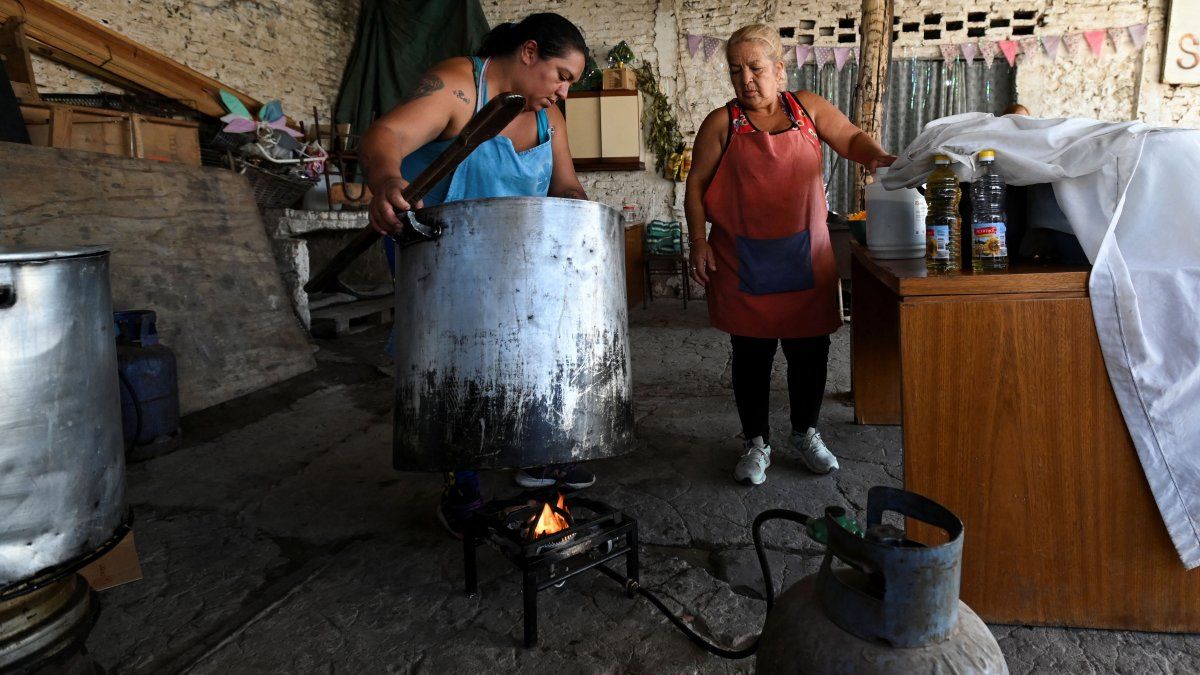The Inflationary acceleration processes, Revenue fall and the posterior deterioration of household assets generate what is called Economic stresswhich according to the measurement of the UCA Argentine Social Debt Observatory He reached 50% In 2024, while poverty was 38.1% and destitution in the 8.2%, According to the last measurement of INDEC.
He Economic stress surpassed the 50% for the first time from postpania in 2021, according to the historical series presented by the UCA Argentine Social Debt Observatory. The indicator managed to pierce that key level of 50% in 2021, which reached for the first time in 2016, amid the acceleration of rates and prices, product of the “sincere” of the government of Mauricio Macri.
It is an indicator that Expand the analysis of multidimensional povertysince it measures the perception of the capacity of total income of the home To cover monthly basic consumption, sustain consumption patterns and savings capacity. The home manifests sufficiency or insufficiency of income, that is, that it is not enough to cover its basic and usual consumption, as well as declare whether they had the possibility or not to save.
“The common sense of ‘does not reach me’ shows a more realistic vision of poverty for more than it is a subjective factor”highlighted in the presentation of the report “Economic stress: changes and continuities of historical evolution (2010-2024) and the recent period (2022-2024)” The coordinator Agustín Salvia.
In that line, the economist explained that in economic stress it is observed that “there is a sustained increase in the poverty rate between 2022 and 2024”. On the contrary to the official data, “it does not observe a peak in 2023 and a very pronounced decrease in 2024”.
image.png
Economic stress, indigence and poverty by income of the Argentine Social Observatory of the UCA.
Economic stress according to the socioeconomic level
Although in recent years there is a generalized impoverishment, the recent situation (2022–2024) shows that the middle-low sectors were particularly affectedwith a growing proportion of households that enter situations of economic stress.
He economic stress level According to the socioeconomic level, the 75.3% In 2024 for Very low sectorsincreasing 6.1 percentage points (pp) compared to the previous year, while for Low It was located in the 61.5%, increasing 8.4 pp
Meanwhile, in the Middle-low levels are observed a slightly measured increase (+2.9 pp) and was positioned in 35.7%, being the highest value from postpandycemia. The medium-high was 15.2%, with an increase of 1.7 pp and also touched its highest level since 2020, coinciding with the general indicator of economic stress.
The measurement of economic stress according to non -monetary lacks, that is, access to health, education, housing, food and social security, increase with greater hardness among those who have less deficiencies: for the decil that did not have deficiencies the indicator rose from 15.5% to 22.8% Between 2023 and 2024 (+7.3 pp), while for those who had one or two shortcomings 3.1 and 4.2 pp, respectively, and for those who had three deficiencies or more advanced only 1.6 pp
image.png

In addition, a greater economic stress In homes with children in front of children, also demonstrating the significant poverty that exists among the smallest population. The indicator is located in the 54.6% In homes with children, while positioning itself in the 38% in which there is no presence of children.
The improvement of the indicators was also disparate: The middle-low sector shows a worsening of its situation between the years 2022, 2023 and 2024 around 25%, while the low sectors show 15.6%, the very low 17.5%and the high ones 15%.
For this reason, from the Report of the Observatory of the Argentine Social Debt of the UCA they claim that “there is a generalized impoverishment”, with the average sectors-bases particularly affected and a “impoverishment of traditionally stable sectors.”
In that sense, Salvia stressed that both the Health deficiencieswhich include food security such as access to medicines; as well as the labor strongly affect social stress. In recent months, the PAMI stopped covering all the medications that older adults access and a fall in the consumption of prescription medications was also observed.
“The experience of economic stress is constituted as a useful tool to identify vulnerability situations that remain hidden if the objective and indirect is used as the only criterion. Homes not identified as poor but that express to experience daily deprivations or deterioration in their quality of life,” summarizes the report.
Source: Ambito




